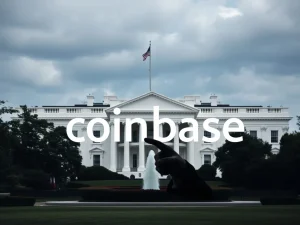Crypto News Today: Crucial Insights on Stablecoin Adoption, Regulation, and a Major Bitcoin Theft Case

Stay ahead in the fast-paced world of Crypto News Today. Every 24 hours brings significant developments impacting market trends, technology, and policy. From high-stakes regulatory battles to surprising institutional shifts and ongoing security challenges, here’s a look at the key events shaping the digital asset landscape right now.
Challenges in Crypto Regulation Today
Regulatory scrutiny remains a dominant theme in Crypto Regulation. Recently, World Liberty Financial (WLFI), a crypto platform with ties to the Trump family, pushed back against inquiries from US lawmakers. Zach Witkoff, a co-founder, responded to Senator Richard Blumenthal’s request for investigation, stating the concerns were based on “fundamentally flawed premises.”
WLFI’s lawyers argued that calls for oversight were a “misuse of regulatory authority” intended to suppress innovation, rather than address specific allegations. The company indicated it was prioritizing building its platform over engaging extensively with the oversight requests at this time. This exchange highlights the ongoing tension between rapid innovation in the crypto space and the push for increased transparency and accountability from governing bodies. Upcoming legislative discussions, such as those around the GENIUS Act concerning stablecoins, may further illuminate how potential conflicts of interest related to crypto will be handled in the political arena.
Surge in Stablecoin Adoption
A new report from Fireblocks reveals a significant trend: widespread institutional interest and activity in stablecoins. The data shows that 90% of institutional players are actively “taking action” on Stablecoin Adoption, meaning they are either currently using or planning to use stablecoins in their operations.
Key findings from the report:
- 49% of surveyed institutions are already using stablecoins for payments.
- 23% are conducting pilot programs.
- 18% are in the planning phase.
- Only 10% remain undecided about stablecoin use.
Financial institutions, particularly traditional banks, view stablecoins as a strategic tool. Cross-border payments are a top priority, offering a way to overcome the high costs and delays associated with traditional systems. Banks are using stablecoins to gain a competitive edge, reduce friction, and better meet evolving customer expectations. Beyond cross-border transfers, institutions are also exploring stablecoins for accepting payments, optimizing liquidity, merchant settlements, and B2B invoicing.
Major Bitcoin Theft Case Expands
Authorities continue to crack down on crypto-related crime. In a significant development for a major Bitcoin Theft Case, the US Department of Justice has added 12 more individuals to the list of defendants. This brings the total number of people charged in connection with a $263 million crypto crime spree to a larger figure, including the theft of 4,100 Bitcoin from a Genesis creditor last year.
The superseding indictment details a “cyber-enabled racketeering conspiracy” that allegedly involved break-ins, money laundering, and the large-scale crypto theft. Many of the newly charged individuals are young adults, some reportedly starting as friends playing online games before engaging in criminal activities. While several arrests have been made, some defendants are believed to be outside the country, highlighting the global challenge of tracking and prosecuting crypto criminals.
Institutional Crypto Trends Continue
The growing interest and activity from traditional finance and large corporations in digital assets signal a broader trend in Institutional Crypto engagement. While regulatory clarity is still developing, the high rate of stablecoin adoption planning indicates that institutions see tangible benefits and are moving forward, particularly in areas like payments and liquidity management. However, the ongoing large-scale criminal cases serve as a reminder of the significant security and legal risks that still exist in the ecosystem, requiring vigilance from both individuals and large players.
Conclusion
Today’s crypto landscape presents a mix of progress and persistent challenges. We see significant movement towards mainstream adoption, particularly with institutions embracing stablecoins for practical use cases like payments. Simultaneously, the industry grapples with regulatory friction, as seen with WLFI’s response to oversight, and faces ongoing battles against sophisticated criminal operations like the major Bitcoin theft case. Staying informed on these diverse developments is crucial for navigating the complexities of the crypto market.










